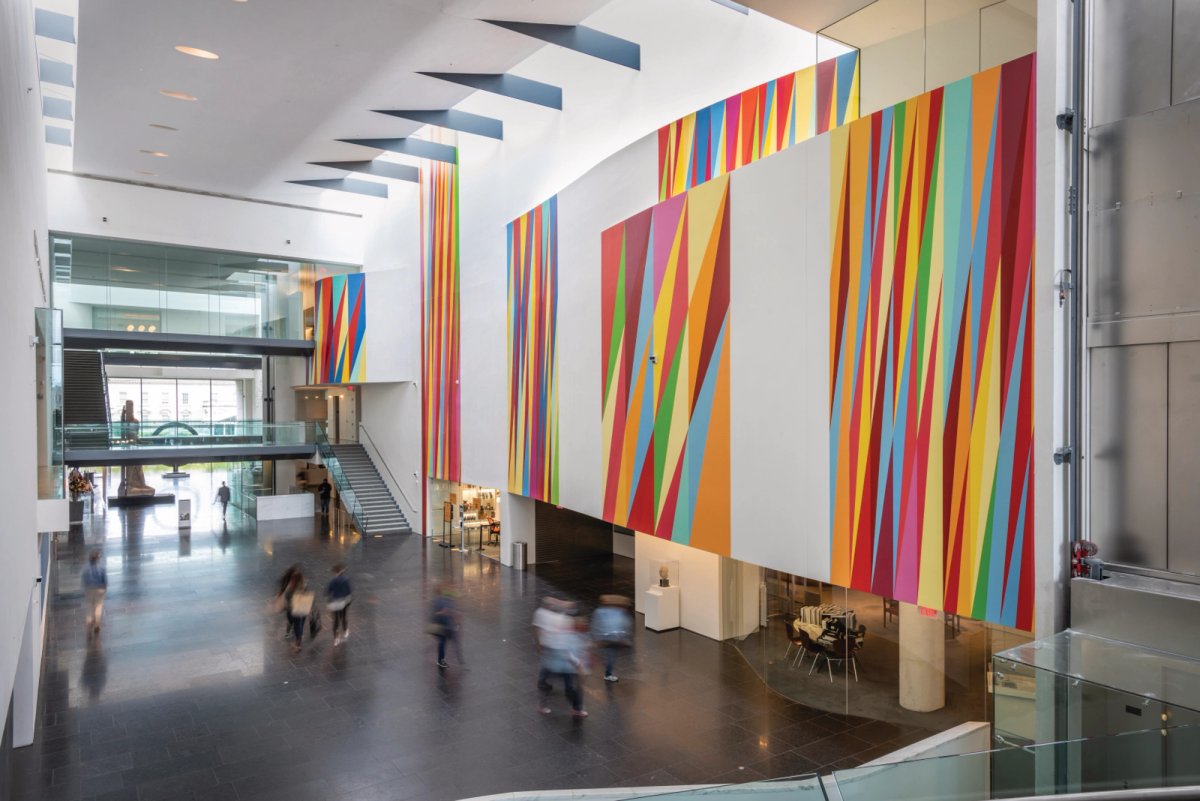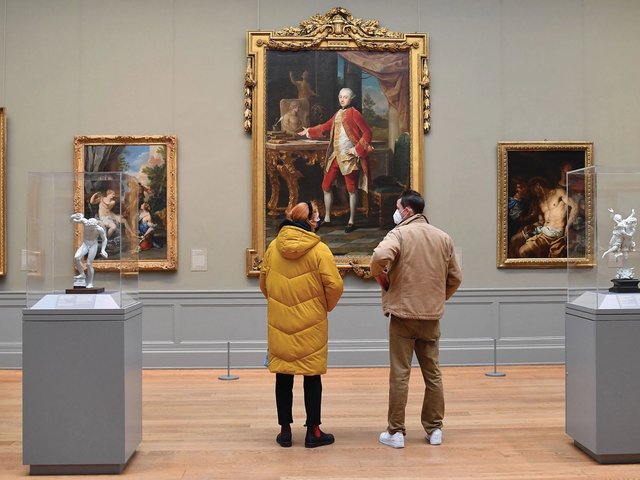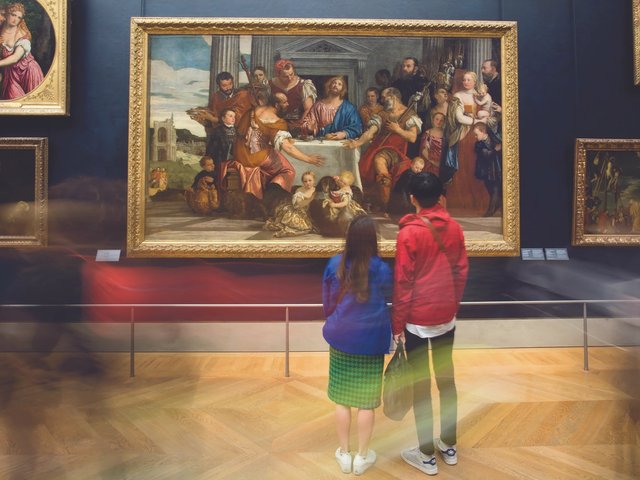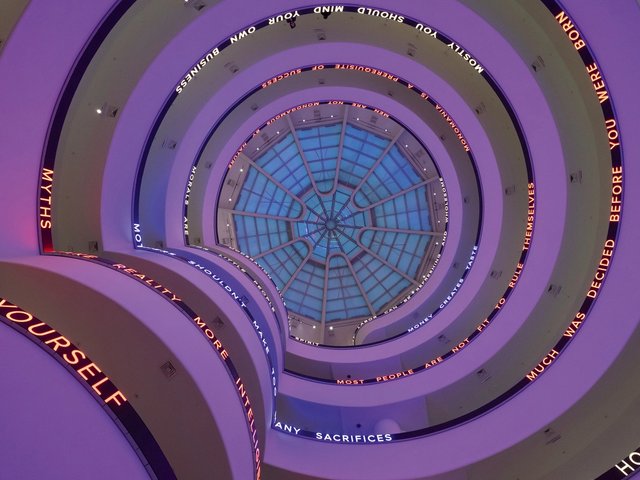With the advent of Covid-19 came the sounding of the death knells for some US museums. Up to a third were are at risk of closing permanently, a poll for the American Alliance of Museums (AAM) in November 2020 found. The loss of in-person visitors, splashing money on entry tickets, food and drink, books and mementos, left a catastrophic hole in institutions’ balance sheets, made up only partly by the shift to increasing digital output. The AAM concluded that museums were on average operating at 35% of their capacity, “an attendance reduction that is unsustainable long-term”.
While the immediate danger has passed, and most major institutions have survived, battered and bloodied, many were still operating at or below that 35% figure. As elsewhere in the world, the US museums that struggled the most in 2021 were the big names: the world-famous museums in the big cities that have been gutted by the evaporation of international tourism. The National Portrait Gallery in Washington, DC was still down 81% on its pre-pandemic visitor figures; The Broad in Los Angeles down 79%. The mighty Metropolitan Museum of Art in New York has shed more than four million visitors.
“We got creative in our programming very quickly”Mandy Stone, Nelson-Atkins Museum of Art
But for some medium-sized museums, 2021 saw visitor numbers bouncing back to near pre-pandemic levels. Our survey identified a subset of institutions that have been able to quickly catch up to where they were. One of the most successful museums in our survey was the Virginia Museum of Fine Arts (VMFA) in Richmond. It received 411,000 visitors in 2021, 58% up on 2020, and only 19% less than its 2019 total of 508,000. Although it helped that the VMFA was not previously reliant on international visitors, part of its success can be put down to a long-standing policy of encouraging as many people as possible to visit in person.
That ambition manifested itself in opening 365 days a year, free general entry, and a concerted effort to attract a broad, local audience. After being closed for three months in 2020 because of Covid-19, the VMFA went straight back to its normal hours—at a time when many other museums were shutting galleries or reducing opening hours in an attempt to save money. “We felt it was crucial to return to a state of ‘business as usual’,” says the museum’s director, Alex Nyerges, just “with safeguards in place to help protect the health of visitors, staff and volunteers.”
Attendance was down considerably during autumn and winter 2020, but once vaccinations were available, between February and May 2021, attendance slowly tracked upwards. Since the summer of 2021, the museum’s attendance has returned to its regular course, steadily increasing towards the typical attendance of more than 500,000 visitors a year.
The VMFA also decided to retain its blockbuster exhibitions, banking on big-name shows to tempt audiences back. Its biggest show in 2021 was Treasures of Ancient Egypt: Sunken Cities, with nearly 70,000 paying visitors. “Our banner exhibitions create unparalleled excitement, build attendance and introduce new audiences to the museum that might not otherwise visit,” Nyerges says. “While only 35% of our visitors come to see banner exhibitions, those visits are a significant part of our overall attendance, and so we are planning a new suite of galleries for special exhibitions as part of our current expansion.”
Over in Kansas City, the Nelson-Atkins Museum of Art has had similar success in attracting visitors back—achieving 77% of its 2019 visitor number. A key challenge was dealing with complex, conflicting and highly politicised Covid guidelines in Kansas City’s urban and suburban areas. “Our strategy was not necessarily about driving traffic, but communicating our commitment to the absolute highest safety standards, so guests felt comfortable coming,” says Mandy Stone, the museum’s vice president of earned income and guest services. “As a private institution, the museum set its own restrictions and modified them independently, so we were able to remain consistent for visitors.”
The Nelson-Atkins also adapted its offer, Stone says. “We got creative in our programming very quickly, creating marketable ‘featured exhibitions’ from objects in our collection and via local collaborations, and offering creative outdoor experiences all summer. Additionally, our sculpture park is a draw in its own right and we’ve seen many more visitors enjoying it since the pandemic began.”
The Institute of Contemporary Art (ICA) in Boston also attributed its relative success—down just 33% compared to the city’s Museum of Fine Arts, which saw a drop of 62%—to an adapted and apposite programme. “The closure of the ICA during the pandemic, as well other museums around the world, made explicitly clear that art and public space matters. People missed being connected with art in real life, they missed connecting to one another, and we were all seeking meaning during such uncertainty and anxiety,” says the gallery’s director, Jill Medvedow. “Our artistic program in 2021 spoke to those needs. It included two major exhibitions delayed by the pandemic, Virgil Abloh: Figures of Speech and a major, site-specific installation by Firelei Báez,” she says. Medvedow adds that last year “also marked the return of our live performance programme, which attracted full crowds throughout the summer season.”
For VMFA’s Nyerges, a successful recovery from the pandemic means not losing sight of your priorities. “In times of great uncertainty, complex challenges require tried-and-true solutions,” he says. “By returning operations to their normal schedules and concentrating on these fundamentals—quality exhibitions, in-person visits, audience diversity, digital presence and social change advocacy—museums will prove resilient, remain relevant, reinvigorate hope and profoundly impact their communities through art.”






